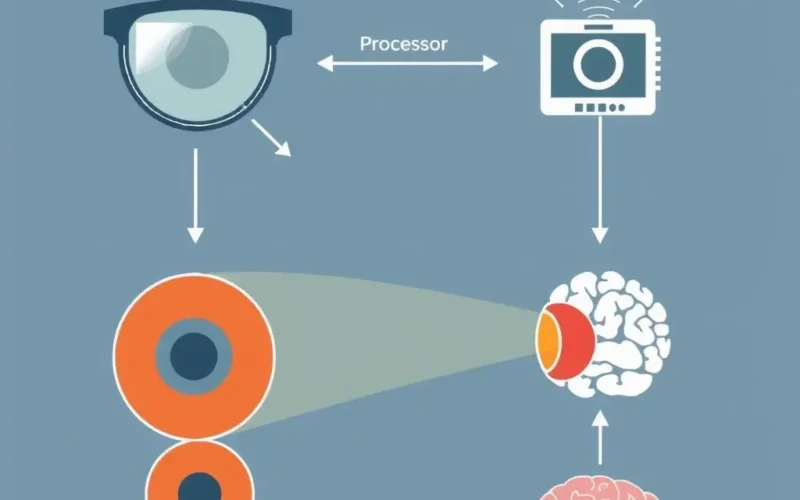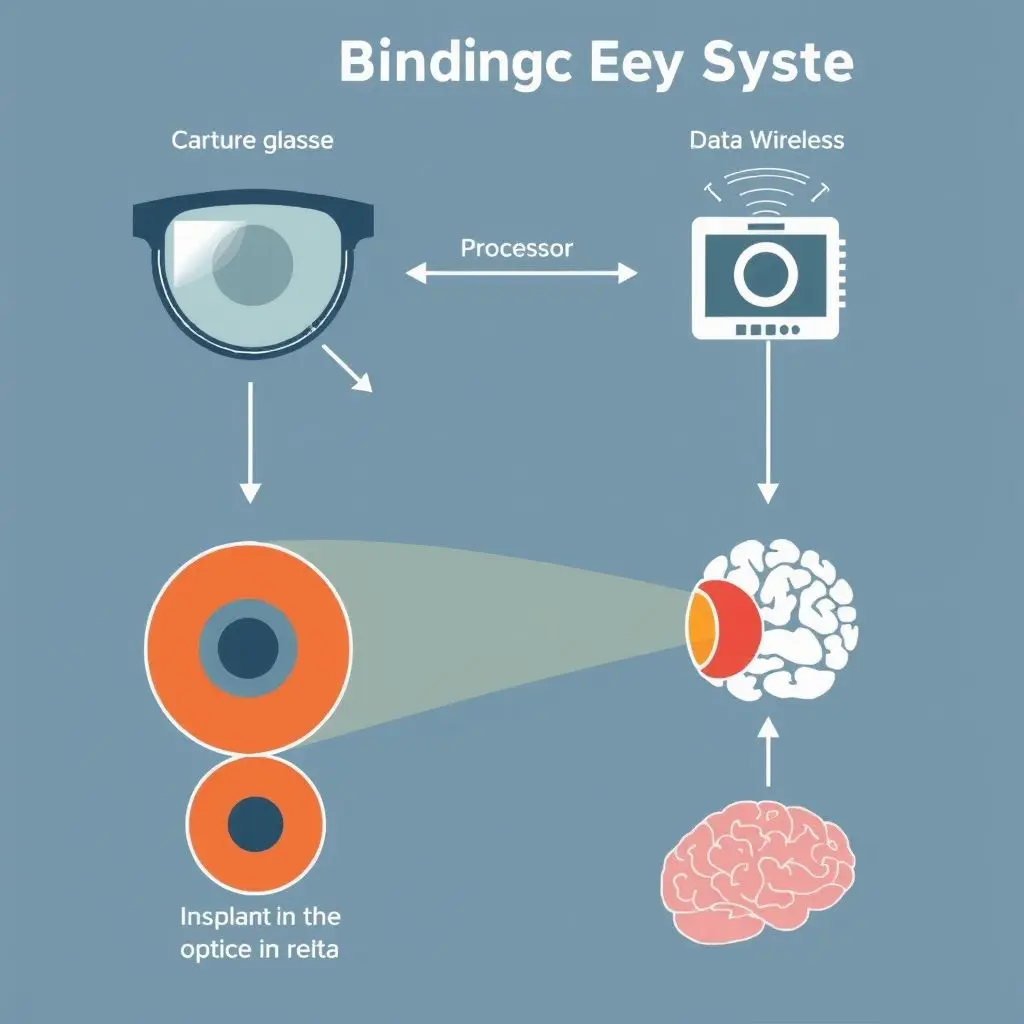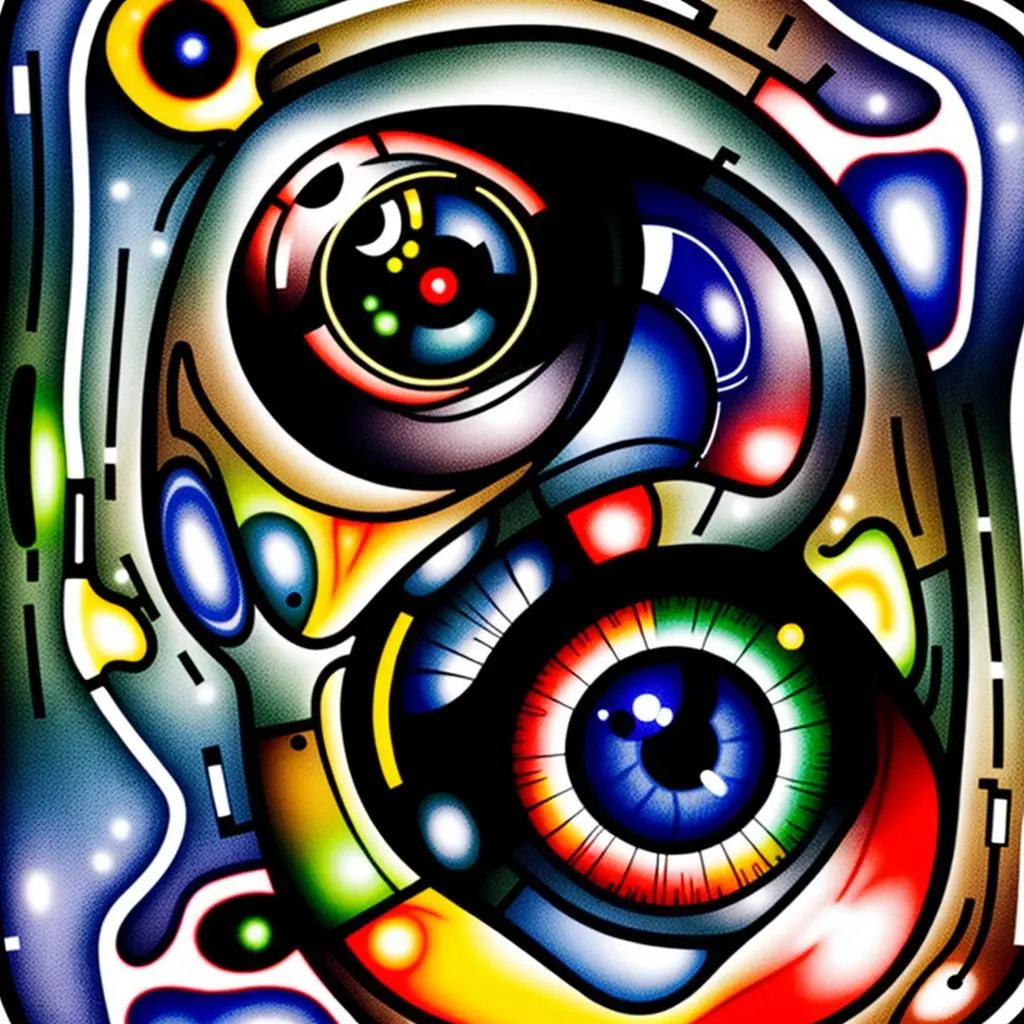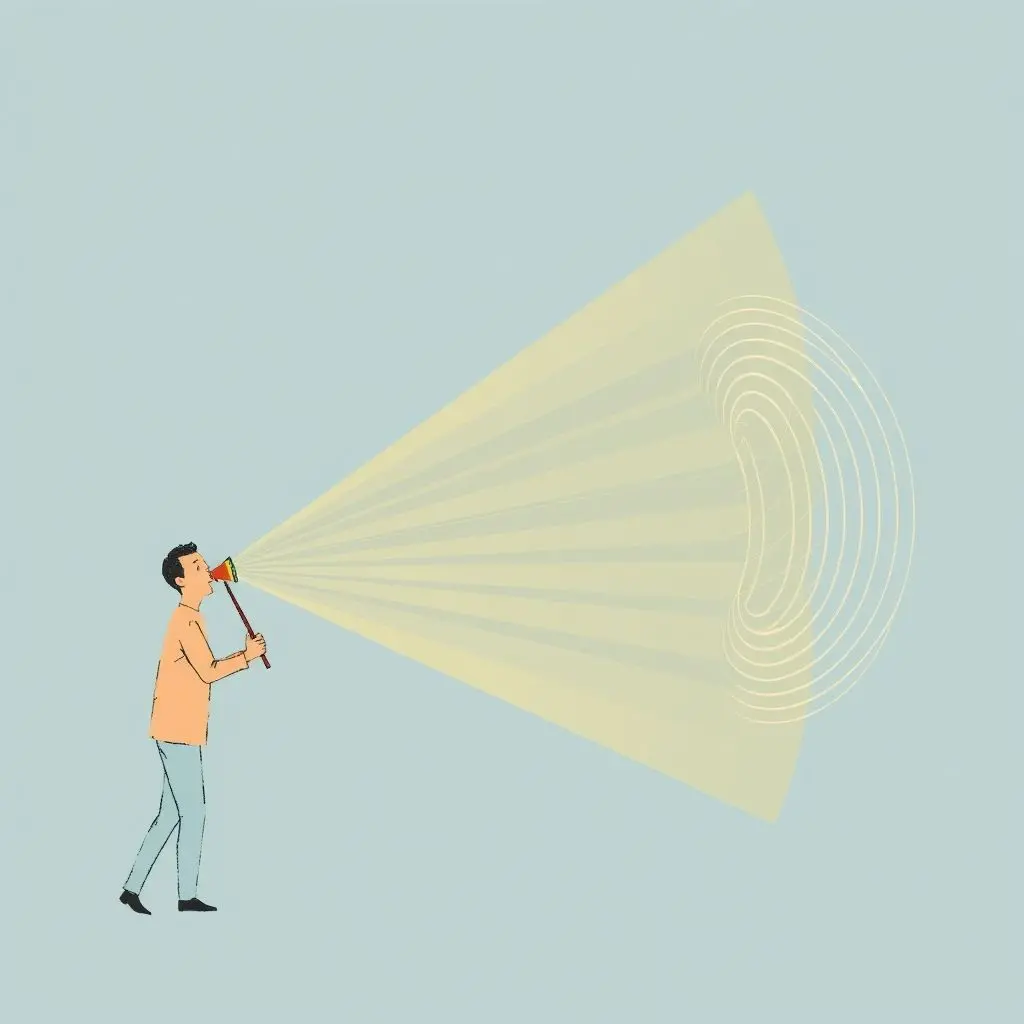Okay, let’s talk about perception. We often think of “seeing” as purely visual, reliant on light hitting our retinas. But what if technology could unlock entirely new ways of understanding the world, even for those who are blind? Prepare to have your mind expanded as we delve into two truly incredible innovations: Bionic Eyes and Echolocation devices.
These aren’t just futuristic concepts; they are real technologies offering transformative possibilities, pushing the boundaries of what sensory input means. Forget traditional limitations and step into a realm where sight meets sound, and data paints a vivid picture of reality.
Table of Contents
Bionic Eyes: Painting the World with Pixels
First up, let’s illuminate the workings of Bionic Eyes. These aren’t simply prosthetics you wear over the eye; they are sophisticated systems designed to bypass damaged parts of the visual pathway and send information directly to the brain.
The fundamental principle involves capturing visual information externally and converting it into electrical signals that the brain can interpret as light and patterns. Think of it as creating a simplified, digital form of vision.
How the Magic Happens: A Step-by-Step Look
The system typically comprises several key components working in concert:
-
External Camera: Usually mounted on a pair of glasses worn by the user, this tiny camera acts as the new “eye.” It captures the visual scene in front of the person, much like a standard digital camera.

- Miniature Processor: Often worn on a belt or carried, this unit receives the raw video feed from the camera. It’s the brain of the operation, processing the image data and converting it into a pattern of electrical signals that the implant can understand.
- Wireless Transmitter: The processed signals are sent wirelessly from the external processor to a receiver implanted inside or near the eye.
-
Internal Implant: This is the core component surgically placed within or around the eye. There are different types, including:
-
Retinal Implants: These are placed directly onto the retina (epiretinal) or underneath it (subretinal). They contain an array of electrodes designed to stimulate the remaining functional cells of the retina, bypassing damaged photoreceptors.

- Optic Nerve Implants: These aim to stimulate the optic nerve directly.
- Cortical Implants: These are placed directly onto the visual cortex in the brain, bypassing the eye and optic nerve entirely.
The implant’s electrodes receive the wireless signals and generate tiny electrical pulses.
-
Retinal Implants: These are placed directly onto the retina (epiretinal) or underneath it (subretinal). They contain an array of electrodes designed to stimulate the remaining functional cells of the retina, bypassing damaged photoreceptors.
- Stimulating the Pathway: These electrical pulses stimulate the targeted nerve cells – be it retinal cells, optic nerve fibers, or neurons in the visual cortex. If these pathways are still functional (even if partially), they can transmit this information onwards.
- Brain Interpretation: The electrical signals travel along the optic nerve (or directly to the cortex) to the brain’s visual processing centers. The brain then interprets these patterns of stimulation as visual information.
It’s crucial to understand that this doesn’t typically restore normal, high-resolution vision. Instead, users often perceive flashes of light, points, or simple shapes corresponding to the stimulated electrodes. It’s like seeing the world through a very low-resolution pixelated display.
Capabilities and Current Status
Despite the low resolution, the benefits can be profound. Bionic eyes can provide users with:
- Crucial light perception (distinguishing between light and dark).
- The ability to detect large objects or obstacles.
- Pattern recognition (e.g., detecting contrast between a doorway and a wall).
- Improved spatial navigation and mobility.
While still an evolving field with challenges related to resolution, durability, and affordability, devices like the Argus II (now discontinued but paved the way) and ongoing research into new implant technologies offer genuine hope for restoring a functional level of sight.
Echolocation Devices: Building a Sound Map
Shifting gears entirely, let’s explore a technology that utilizes a different sense altogether: hearing. Echolocation devices are a brilliant example of sensory substitution, allowing users to perceive their environment through sound.
The concept is elegant and mimics natural echolocation used by animals like bats and dolphins. The device emits sounds, and the user learns to interpret the echoes that bounce back from surrounding objects to build a mental picture of the space.
How Sound Becomes Sight: The Echolocation Process
These devices, which can range from handheld gadgets to attachments for canes, work like this:
-
Sound Emission: The device emits controlled sounds, typically clicks or beeps. These sounds travel outwards into the environment.

- Echoes Return: When the sound waves encounter objects (walls, furniture, people), they bounce back as echoes.
-
Echo Analysis: The device or the user (depending on the system) receives and analyzes these returning echoes. Key factors are examined:
- Time Delay: How long it takes for the echo to return indicates the distance of the object.
- Volume/Intensity: Stronger echoes typically come from larger or harder surfaces; weaker ones from smaller or softer materials.
- Pitch/Timbre Changes: Subtle changes in the echo’s characteristics can provide information about the object’s texture, shape, and material.
- Audio Cue Translation: Some devices translate the raw echoes into distinct audio cues for the user – perhaps different tones, pitches, or rhythms representing distance and object characteristics. Other systems simply rely on the user’s trained ability to hear and interpret the raw echoes themselves.
- Mental Mapping: Through practice and training, the user learns to interpret these audio cues or echoes, mentally constructing a detailed, three-dimensional map of their surroundings. They can perceive obstacles, open spaces, doorways, and even the general layout of a room based on the sound feedback.
Unlike bionic eyes which provide a form of simulated vision, echolocation devices leverage the auditory system to provide spatial awareness. It requires significant training and practice to become proficient, but users can achieve remarkable levels of navigation and environmental understanding.
These technologies represent different, yet equally revolutionary, approaches to enhancing independence and access for the blind community.
To see a quick overview of these fascinating technologies, take a look at this short video:
Pretty incredible, right? Where one technology aims to replicate a form of visual input, the other empowers users to ‘see’ the world using echoes.
The Combined Impact and Future Horizons
Both bionic eyes and echolocation devices are more than just gadgets; they are keys to unlocking greater independence and mobility. They offer alternatives and supplements to traditional aids like canes and guide dogs, providing new layers of information about the environment.
While distinct in their approach (simulated sight vs. auditory spatial mapping), they share the common goal of enhancing sensory perception and reducing the barriers imposed by blindness. The future likely holds advancements in both fields – higher resolution bionic implants and more sophisticated, intuitive echolocation systems, perhaps even combinations of different sensory input technologies.

The journey towards a future where blindness no longer means a lack of rich environmental perception is ongoing, driven by relentless innovation in science and technology.
Frequently Asked Questions About These Technologies
Let’s address some common queries about bionic eyes and echolocation devices.
Q: Do Bionic Eyes restore 20/20 vision?
A: No, not at all. Current bionic eye systems provide a much lower resolution form of vision, typically allowing users to perceive light, dark, large shapes, and patterns rather than detailed images or colors. The goal is functional vision for mobility and object recognition, not restoration of full sight.
Q: Are these technologies widely available or common?
A: Bionic eye implants are complex surgical procedures and are not yet widespread. Availability depends on regulatory approval, cost, and suitable candidates (users with specific types of retinal degeneration). Echolocation devices are more accessible, though proficiency requires training.
Q: How much do Bionic Eyes cost?
A: Bionic eye systems are extremely expensive, involving both the device cost and the complex surgery. Costs can range in the hundreds of thousands of dollars, often covered partially or fully by insurance or research programs where available. *Note: Specific costs vary greatly and are subject to change.*
Q: Is echolocation using a device the same as human echolocation (like Daniel Kish)?
A: Human echolocation, as practiced by individuals like Daniel Kish, relies on clicks made by the mouth. Devices automate the sound emission, but the principle of interpreting returning echoes is similar. Both require significant auditory training.
Q: Who is a candidate for a Bionic Eye?
A: Candidacy is specific to each device and often depends on the cause of blindness (e.g., retinitis pigmentosa, macular degeneration) and the condition of the optic nerve and inner retinal layers. It requires a thorough medical evaluation.
Q: How long does it take to learn to use an echolocation device?
A: Learning to effectively use an echolocation device and interpret the echoes takes time and dedicated training, similar to learning to navigate with a cane or guide dog. Proficiency varies from person to person.
Opening Doors to a New World
The development of bionic eyes and echolocation devices highlights the incredible potential of technology to augment and even replace sensory input. These innovations are not just scientific marvels; they are tools of empowerment, offering individuals who are blind unprecedented levels of independence and richer interaction with their environment. They remind us that perception is a complex process, one that science is continually learning to understand and reshape, offering a compelling glimpse into a future where technological innovation helps bridge sensory gaps in truly profound ways.








